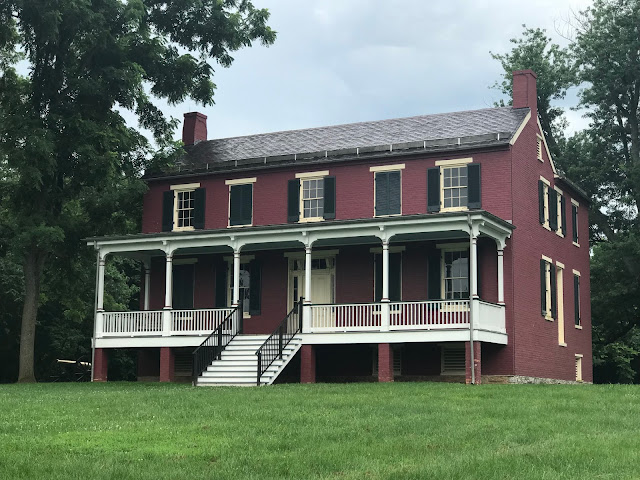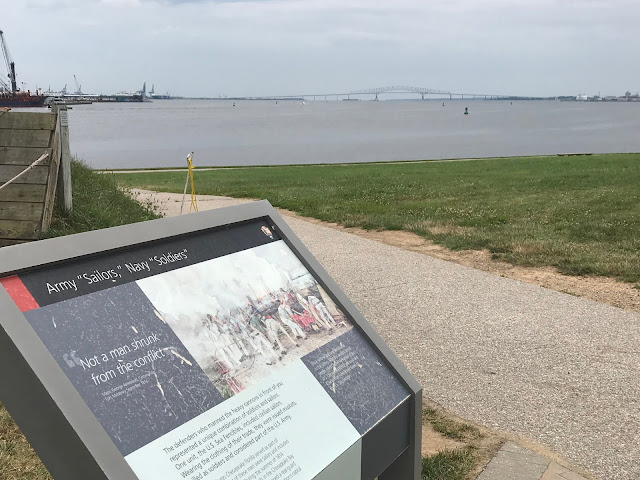Monocacy is a small battlefield site and a simple, yet very nice exhibit in the visitor center and bookstore is there. While the building is simple, I was very impressed with the exhibit. Excellent artifacts and small yet informative.
This battle occurred July 9, 1864 near the end of the Civil War as part of the Valley Campaigns and was the battle that saved Washington D.C. During the summer of 1864, the Confederates had a plan to turn the war in their favor by capturing D.C. and influence the election of 1864. But, at this battle, Federal soldiers (who were outnumbered 3 to 1) fought heroically on the banks of the Monocacy River in an effort to buy time for the Union army to be reinforced and get to Washington D.C. While Monocacy was not a large battle, it had a great importance and larger than many understand. Because of the heroism of these brave men, it became known as "The Battle That Saved Washington".
Then, we took the simple 5 stop auto tour and read about each stop on the way. The area is quite small compared to other battlefields we've been to, so we did this whole site including the exhibit and drive in about an hour.
Stop 1 - The Best Farm
Stop 2 - Monocacy Juntion (This was closed due to railroad construction until the summer of 2019).
 |
| Mapio.net Photo |
Stop 4 - Thomas Farm
Stop 5 - Gambrill Mill
After we did this national battlefield, we grabbed some groceries and went back to our rig to put them away and then headed to Fort McHenry National Monument and Shrine and meet Ryan and Josh. This is the place I'd been wanting to visit on the 4th of July so I was glad to be there.
While this is a battlefield site, it isn't a Civil War site but part of the War of 1812 where in Francis Scott Key effectively and dramatically penned the bombardment of Fort McHenry. Key and Colonel John S. Skinner were on board a British ship to negotiate the release of Dr. William Beanes. They had sailed on Sept 5th from Baltimore they reached the British fleet in the Chesapeake Bay on Sept 7th and after a couple of days, negotiations had arranged for Beanes to go free. But while on board they learned of the British plan to attack to force the surrender of Baltimore and the men were forbidden to leave until after the assault concluded. They witnessed the long bombardment from the deck of a US truce ship September 13-14, 1814. During the night of the battle, had jotted down notes as the morning dawned, the valiant defense of the fort inspired the remainder of the song. Key finished the poem upon his return to Baltimore on the evening of Sept. 16th. The title was "Defense of Fort McHenry" and published the next day and was soon being sung to "To Anacreon in Heaven". Now known as The Star-Spangled Banner, it became our National Anthem in 1931. To finish the War of 1812, when the British and American realized no end would be in sight, they called a truce and signed the Treaty of Ghent.
 |
| Key's penned poem |
The exhibits were pretty good, too. Enjoy these photos.
And, now to tour around the fort. The fort is in a star shape with points called bastions. There were men's barracks, junior office barracks, powder magazine, commanding officers quarters, parade ground, guardhouse and ravelin. Outside was the sally port and dry moat. There was the main grounds, an upper tier and underground areas that housed the munitions.
 |
| Web Photo |
 |
| Web photo |


































































=)
ReplyDelete:-)
ReplyDelete